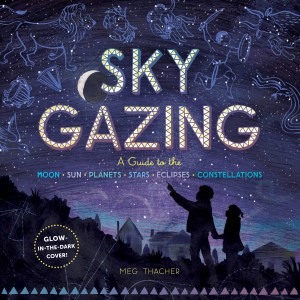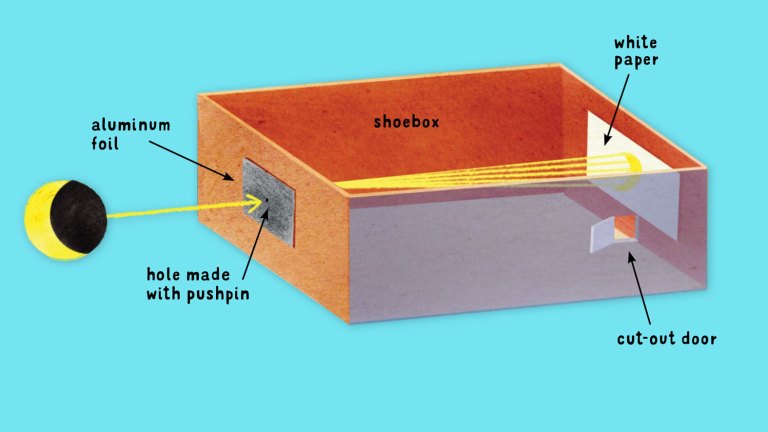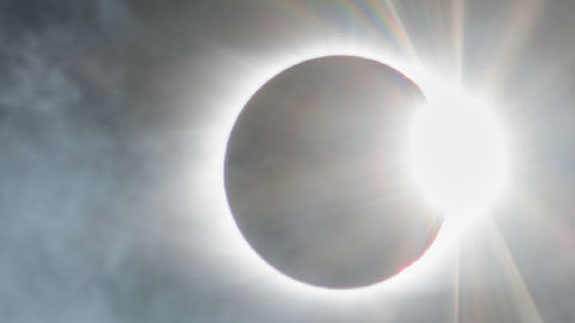Make a Moon Diary: An Astronomy Activity for Kids
Learn why the Moon seems to change its shape from one night to the next, and keep track of its phases with your very own Moon Diary.
If you’re a Moon-watcher, you know that the Moon seems to change shape from one night to the next. The different shapes of the Moon are called phases.
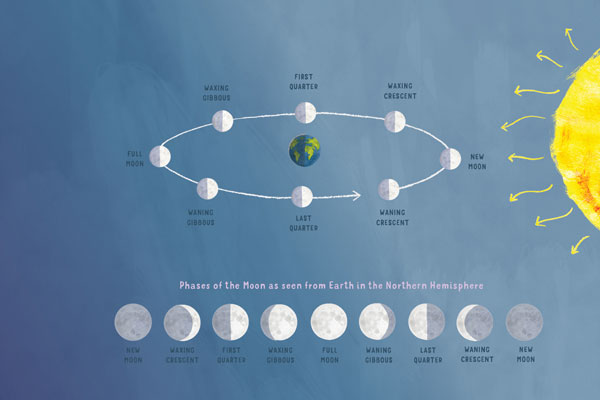
The Moon doesn’t shine with its own light — it reflects the light of the Sun. The shape that we see is the part of the Moon that is lit up by the Sun. As the Moon orbits Earth, different parts of it are lit up, and so it looks different to us from Earth.
It takes about a month for the Moon to go through all of its phases. In fact, the word month comes from the Old English word for moon.
Track the Moon’s Changes in a Moon Diary
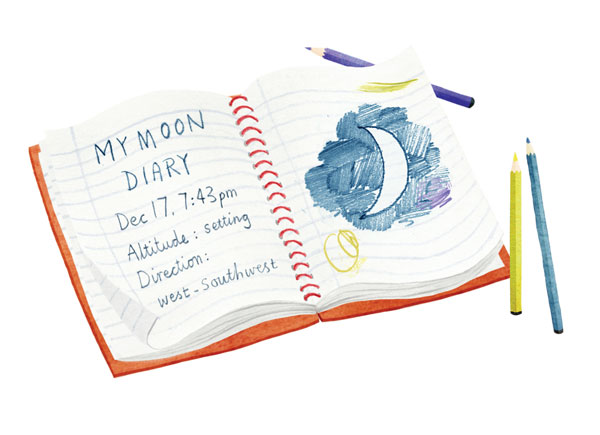
You can start your Moon Diary anytime, except when the Moon is new and can’t be seen. Look for the Moon during the night and during the day. When you see it, record in your notebook:
- The time and date
- Where the Moon is in the sky (how high and in what direction)
- A sketch of the Moon’s shape
Here are some other questions you might ask yourself as you make notes in your Moon Diary: What are some of the things you notice about the Moon? How does its shape change? Is it always up at the same time of day or night?
When to look for the Moon
The full Moon is opposite the Sun. It rises at sunset and sets at sunrise. The new Moon rises with the Sun at sunrise and sets with it at sunset. The Moon rises about 50 minutes later every day, so you can often see it during the daytime.
What you can see on the Moon
We always see the same face of the Moon, because as it orbits, it keeps the same side toward the Earth at all times.
The Moon is covered with craters. Craters form when meteoroids (space rocks) crash into the Moon. A mare (mar-ay) is a round, smooth, dark plain on the Moon. More than one mare are called maria (mar-ee-uh). Maria formed when very large meteoroids crashed into the Moon. These large craters later filled up with lava, which looks darker than the surrounding rock.
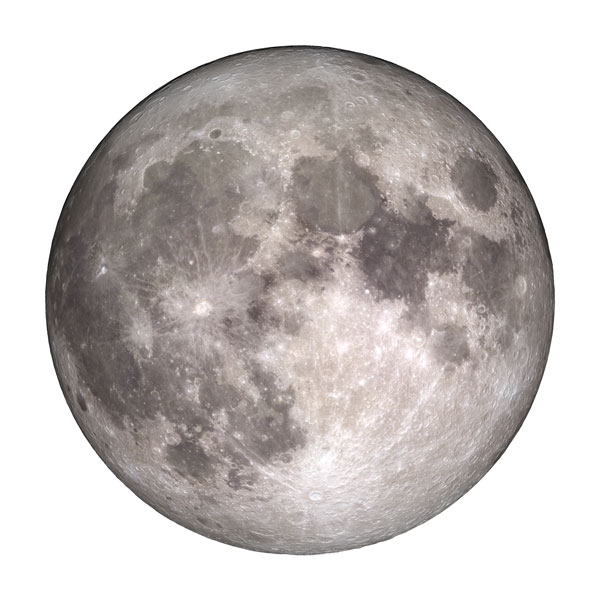
Picture the Moon
People see many different things when they look at the Moon. Ancient people made up stories about the shapes they saw on the Moon. Below are just a few of those stories:

Tree in the Moon: In Polynesian legend the goddess Hina was a gifted weaver who created beautiful kapa cloth from the bark of the banyan tree. She grew restless, though, and left Earth, traveling on a rainbow first to the Sun, which she found too hot, and then to the Moon. There she remained with a banyan tree. You can see the tree, where she lives and continues to weave her cloth.
Moon Rabbit: Many cultures around the world see a rabbit in the shapes on the Moon. In Chinese folklore it is using a mortar and pestle to grind herbal medicines for the gods.
Man in the Moon: Can you see a face in the Moon? Some say the face looks happier in the Southern Hemisphere, sadder in the north. The Moon indeed looks different when you travel: viewed from the Southern Hemisphere the bright Tycho Crater is on top, and the maria form a U-shape, while it’s the opposite in the Northern Hemisphere.
What do you see in the Moon? In your Moon Diary, create your own picture with the maria and make up a story about it.
TEXT EXCERPTED FROM SKY GAZING © 2020 BY MEG THACHER. ALL RIGHTS RESERVED.
Learn More
In this highly visual guide to observing the sky with the naked eye, kids aged 9–14 will delve into the science behind what they see. This captivating book offers a tour of our solar system and deep space, explaining how objects like Earth’s moon were formed and introducing the “why” behind phenomena such as eclipses, northern lights, and meteor showers. Sky gazers will learn how to find and observe planets — no binoculars or telescopes required — and star charts will show them how to spot constellations through the seasons and in both hemispheres.
Activities include tracking the cycles of the sun and moon and observing the sky during daylight hours or on a cloudy night. Includes profiles of professional astronomers and sidebars on space technology and current issues, such as light pollution.
